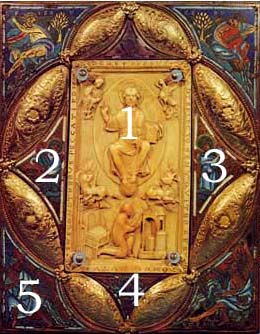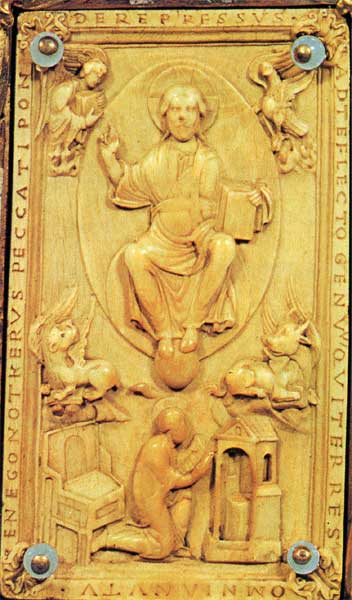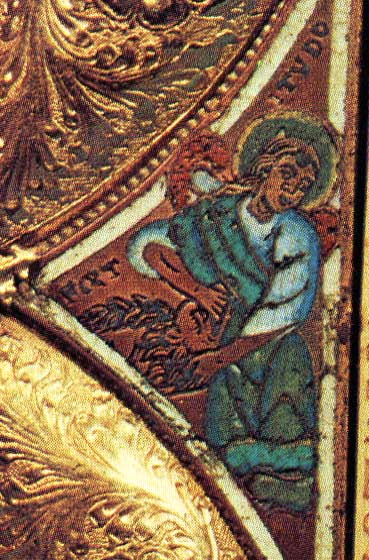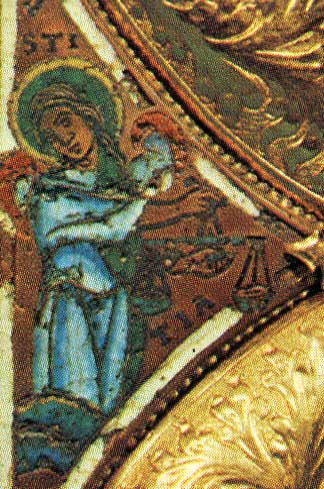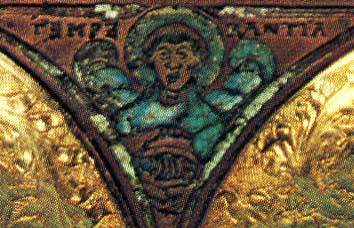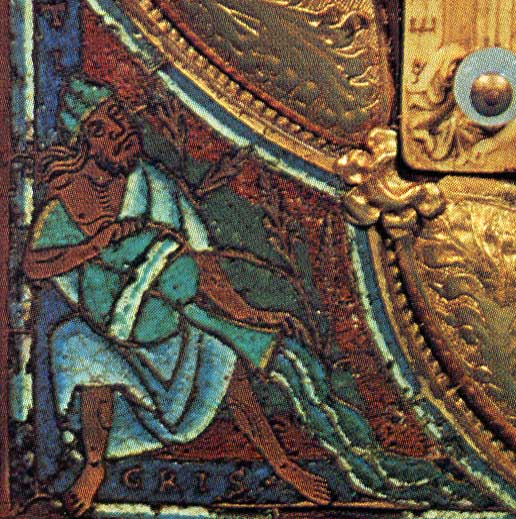| A Thought on the Cardinal Virtues in the Tarot Cards |
featuring the Bible of Notger by Koretaka Eguchi |
The earliest known tarot decks are "Visconti-Sforza"s, hand-painted in early fifteenth century. But these splendid pieces of fine art were minorities because of their artistic quality; such extavagant decks were exclusively for the aristocratic pastime in a palace or a castle. The streets and taverns must have been filled with cheaper, vulgar woodprinted decks imported from Germany or elsewhere, as we can see in the "Magistracy of Venice, 1441"(Kaplan, Encycropedia of Tarot", I, p.22). The magistracy issued an order forbidding the introduction of foreign manufactured printed colored figures. Kaplan suggested this order was to protect domestic card makers from German rivals and I have no reason to doubt him. Of course we want to see those imported German decks and "printed colored figures" at that time, and many of us searching them all around the world in vain. Those cheap, vulger cards were just discarded when worn out, leaving no trace. The quality of card paper used those days was presumably low, and might have not survived the centuries. But if we assume that the "printed colured figures" were once "religious cuts and pictures of saints, produced in the convents, and sold at the various shrines to the pilgrims"(Arthur Hind, A History of Engraving and Etching, Dover, New York, p.19), then at least we could know the direction we must go--the religious articrafts of medieval North Europe. And I found a very interesting thing in Liege, Belgium -- |
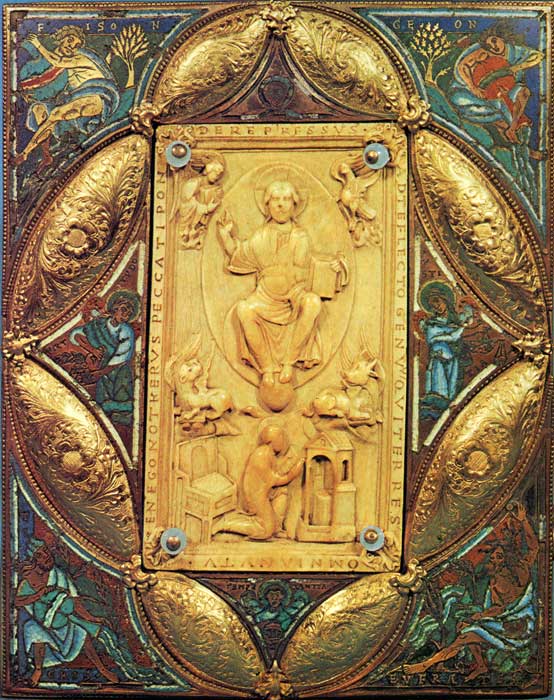 |
The Bible of Notger |
|
The above is the Bible of Notger now in the custody of Curtius Museum,
Liege. The ivory plaque in the center was made in circa 990 AD, while enamel
parts in 1170. This masterpiece of Meuse art was commissioned by the Prince-Bishop
of Notger who governed the Liege area latter half of 10th century; he was
known as a connoisseur of fine arts and crafts. Now let's see the details -- |
